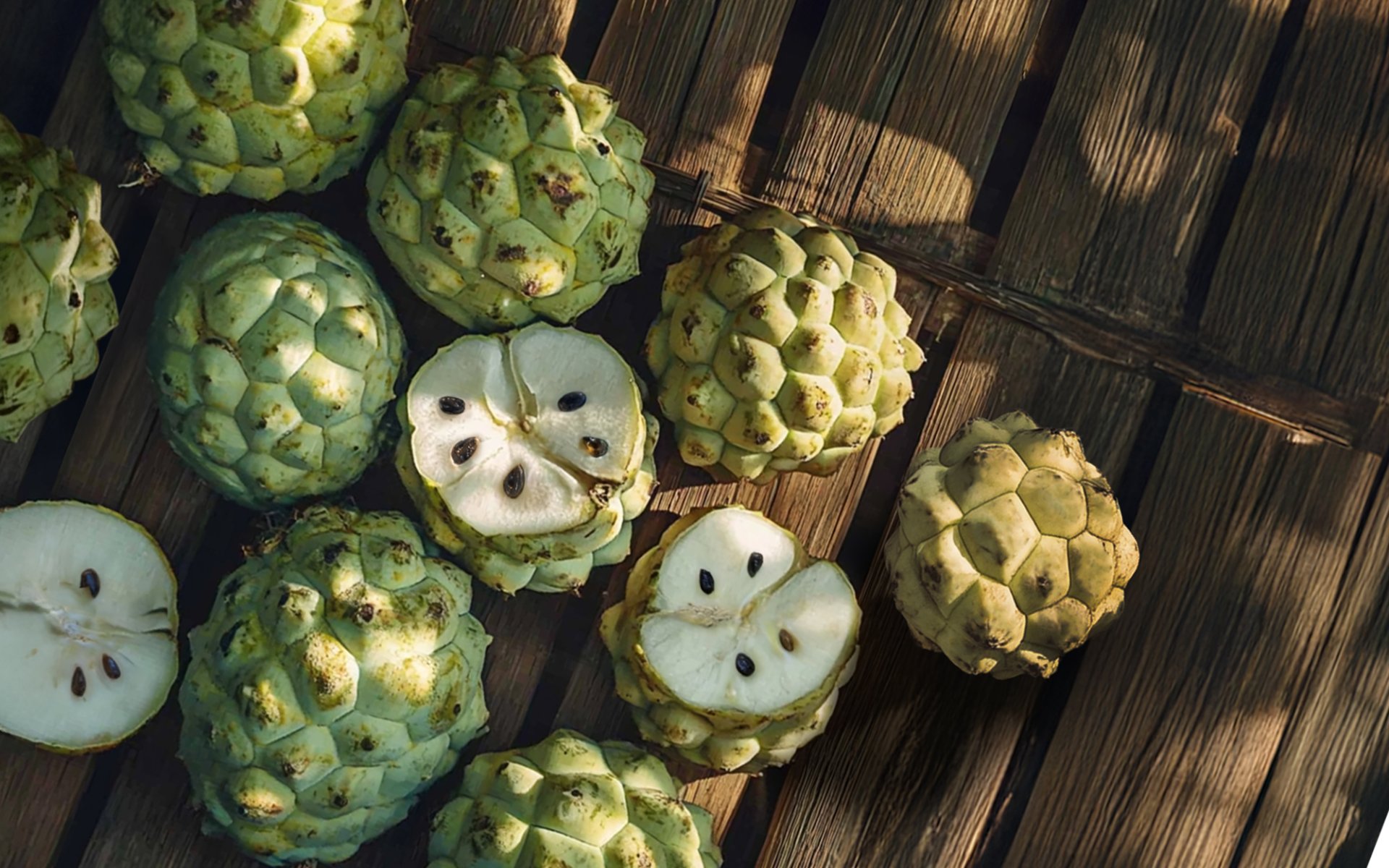Sugar Apple

The Fascinating Journey of the Sugar Apple
Known in Thai as Noi-Na, the Sugar Apple or Custard Apple is a tropical fruit cherished for its creamy white flesh, sweet fragrance, and unique scaly green rind. Though now deeply rooted in Thai culture, this fruit has its origins in tropical America, particularly Central and South America and the Caribbean.
Its journey to Asia began in the 16th17th century, brought along by Portuguese merchants who introduced it during their global trade expeditions. Thailand welcomed this fruit during the Ayutthaya period, alongside other New World crops like pineapple, papaya, and maize.
A Fruit that Found a New Home in Thai Soil
Sugar apple thrives in warm climates and dry areas, making Thailand a suitable home. Though commercial exports remain modest, it is widely cultivated in home gardens and small farms. With adequate irrigation and pruning, the sugar apple can bear fruit all year round, though its natural season is from July to August.
Thai Varieties and Hybrid Innovation
Thailand is home to two main varieties:
- Noi-Na Fai (Cotton Sugar Apple): soft, fluffy texture with green or reddish-purple skin
- Noi-Na Nang (Vietnamese Hybrid): denser texture, peel separates easily, and has fewer seeds
Additionally, newer hybrids like Phet Pak Chong (a cross between sugar apple and cherimoya) produce larger fruits with firm flesh, fewer seeds, and better shelf lifeideal for modern consumption.
Nutrition and Traditional Uses
Beyond taste, the sugar apple is rich in vitamins B and C, calcium, phosphorus, manganese, and antioxidants. Its traditional uses include:
- Crushed seeds to treat lice
- Leaves for natural pesticide
- Roots for detox and digestive health
- Pulp to soothe burns and throat infections
A Foreign Fruit that Became Thai
Despite its foreign origin, the sugar apple is now a beloved staple in Thai homes and markets. Its sweet flavor, versatility, and health benefits have earned it a lasting place in Thailands culinary and herbal traditions.
Find this tropical gem fresh and in season at every Rimping branch.


